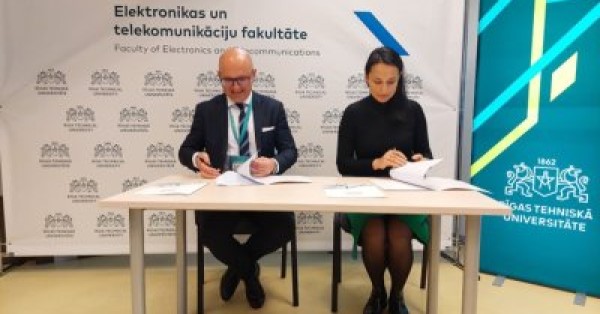Introduction
IS-Wireless, in collaboration with Riga Technical University (RTU), is pioneering the establishment of a 5G Open RAN laboratory. This venture aims to provide a robust network for both educational and expansive research purposes, heralding a new chapter in mobile network research and development.
Challenges or Objectives
The global mobile network landscape is rapidly evolving. With the private 5G market projected to skyrocket to $129.6 billion by 2032, there’s an urgent need for research, development, and hands-on educational initiatives to keep pace with global trends and harness the potential of these networks.
Solution Implemented
An agreement was inked between IS-Wireless, a prominent Open RAN 5G provider, and RTU. This partnership signifies the beginning of a joint endeavor to deploy a private 5G network at RTU. The primary objective is to foster educational, research, and development activities in the realm of 5G.
Supporting Evidence
The anticipated value of the private 5G market, which was $2.6 billion in 2022, is predicted to soar to $129.6 billion by 2032. This exponential growth underscores the importance and timely relevance of the laboratory’s establishment.
Why the Selected Technology Was the Right Choice?
The choice of 5G Open RAN aligns seamlessly with global mobile network trends. Open RAN offers flexibility, scalability, and innovation, making it the ideal choice for a research-intensive institution like RTU.
Use Case Benefits
The deployment of the private 5G network at RTU is poised to:
- Catalyze advanced research in the field of mobile networks.
- Offer students hands-on experience with cutting-edge technology.
- Propel Central Eastern Europe to the forefront of 5G research and innovation.
Industry Impact
This collaboration sets a precedent for academic institutions and industry leaders globally. By integrating research, education, and practical application, it paves the way for future innovations in the realm of 5G networks.
Company’s Role (IS-Wireless)
IS-Wireless, with its expertise in 5G deployments, plays a pivotal role in bringing this project to fruition. As expressed by CEO Sławomir Pietrzyk, their experience ensures that the university can harness the full spectrum of educational and research opportunities presented by 5G.
Partners for the Use Case and Their Role
- Riga Technical University (RTU): Providing the location and infrastructure for the laboratory while also driving research and educational initiatives.
- Polish Ministry of Foreign Affairs, Polish Investment & Trade Agency, and CEE Digital Coalition: Supporting the 5G Techritory 2023 event in Riga, fostering discussions around Open RAN deployments.
Use Case Status
Being Deployed
Use Case Timeline
The agreement was signed during the 5G Techritory 2023 conference. The official launch of the laboratory at the Faculty of Electronics and Telecommunications followed shortly after, marking just a year since the initial discussions began.
Customer Endorsements
Liene Briede, Vice Rector of Innovations at RTU, emphasized the significance of this collaboration. She highlighted it as a shining example of swift, collaborative progress, showcasing the synergy between the research community and the industry. The venture encapsulates the region’s competitive edge, spotlighting its capability for rapid, innovative strides.







































